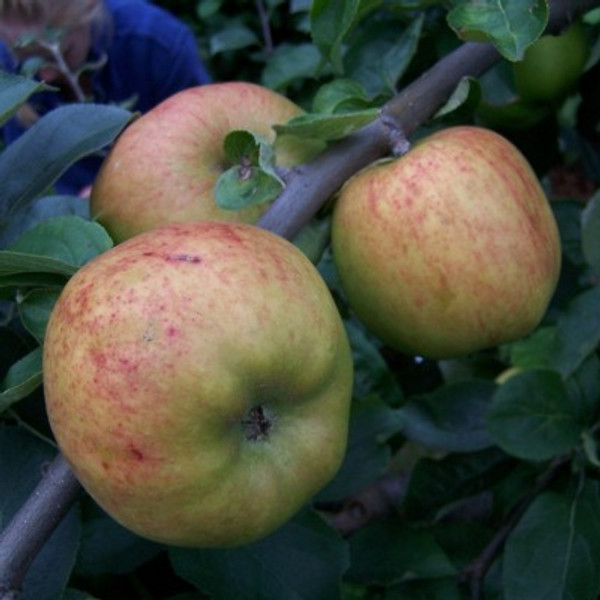Description
A very old dual purpose apple raised in the mid 19th C on the estate of Lord Henniker at Thornham Hall in Suffolk by the Head Gardener Mr. John Perkins. As a dessert apple this is slightly sharp with a sweet and spicy aroma. When cooked, the fruit breaks down to a wonderfully aromatic yellow puree with a delicious sweet flavour. The unusually-shaped apples, almost angular in appearance, are produced in abundance.
"A much favoured apple in at least two orchards of close acquaintance, one on either side of the Pennines, this buxom and attractive apple does well in the north. Origins humbler than the name suggests, having sprouted forth from a batch of seedlings sown from cider must — long odds on getting a winner. In this case, however, meticulous selection was practised; from several bushels of pips sown, the progeny was whittled down over a decade and a half to thirty three;' Lady Henniker, a clear front runner from the start, was so named in honour of the wife of Lord Henniker, of Thornham Hall, Eye, Suffolk, and introduced by John Perkins, the Head Gardener, in 1873. Used chiefly by Perkins ... 'when large and handsome dishes of mixed fruit are required for the dinner-table. Its appearance by lamplight is most telling.'
It cooks to a pale yellow, strongly flavoured, sweetly fragrant purée; it is tender in a tart, and very good for dishes like Apple Charlotte that are spoiled by too much juice. Hilary Wilson says that ...'it took a long time to bear fruit, and although it does get a little scab, I would not part with it as it tastes too good.'" © Lin Hawthorne - 'The Northern Pomona'.
For help with choosing the correct rootstock for your needs, please click here A Guide to Rootstocks
For help with choosing the correct size and shape, please click here A Guide to Fruit Tree Shapes







